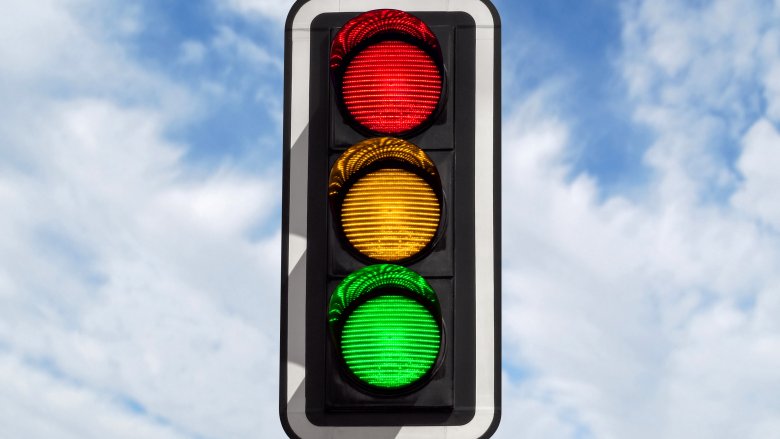Here's Why Traffic Lights Are Red, Yellow, And Green
- hello
- world
There are some aspects of life that we just accept as fact, never bothering to question the logic behind them. Things like which direction on the map is up, what order the alphabet is supposed to be in, and the fact that you should only ever eat a cheesesteak in Philadelphia. But if we take a step back and look into the history of some of these set-in-stone gospel truths, there's often a fascinating story behind them, or at least one that's good enough to deploy during emergency small talk at an office party.
Take traffic lights. Since we were kids, we were told that red means stop, green means go, and yellow means either "gun it" or show some caution — you're going to make somebody mad either way. But just where did the universal color language for vehicular velocity control come from?
Some of the facts are hazy, but a lot of the traffic light color coding actually comes from the railroad. Lights were used as a way to communicate to trains when they needed to stop from long distances. According to Reader's Digest, lamps with colored filters were used to signal oncoming locomotives, with red being used to signal a stop pretty much from day one, as red is a generally accepted indicator of danger. It's also worth noting that the color red has the longest wavelength on the visible color spectrum, making it easy to see from the furthest distance away. Initially, some train companies used white lights to signal "go," but as mentioned on Today I Found Out, there was a built in problem with that tactic: if the filter fell off of the red light, a white "go" signal would mistakenly be flashed. This led to at least one pretty enormous accident in 1914, and adjustments were made.
You'll be glad to learn that, as frustrating as today's traffic lights can be, they probably won't ruin your day half as dramatically as their predecessor. The first traffic light, installed in London in the 19th century, was powered by what turned out to be astonishingly leaky gas, and exploded a month after installation, injuring a police officer and giving the whole experiment a pretty immediate red light.

